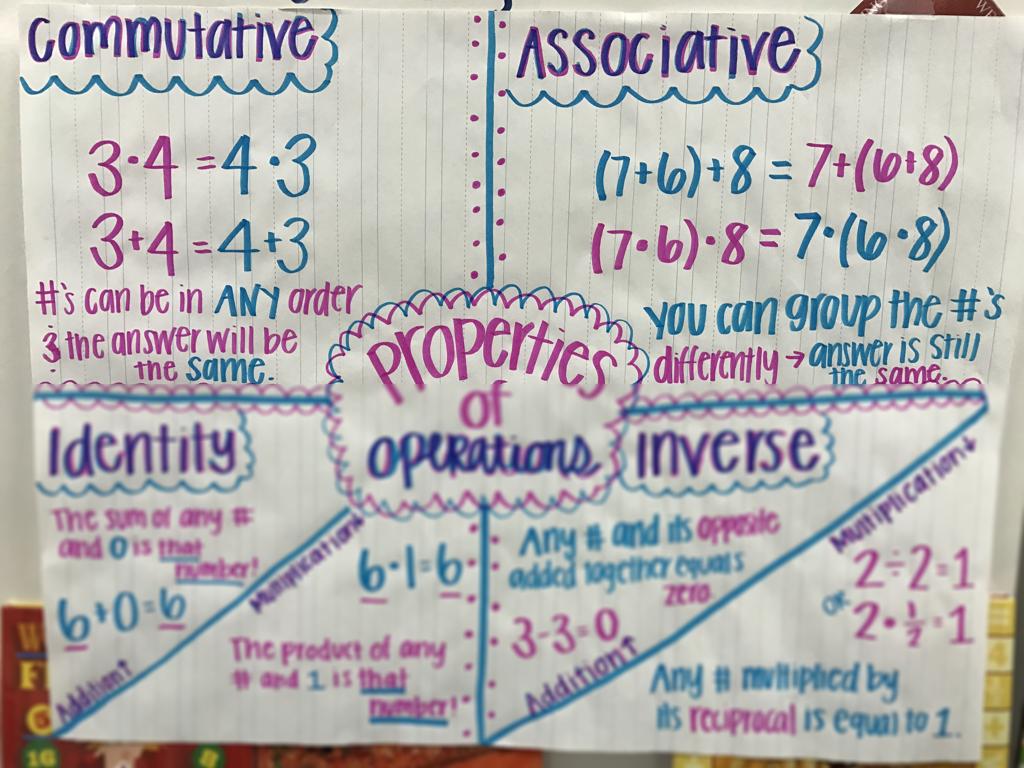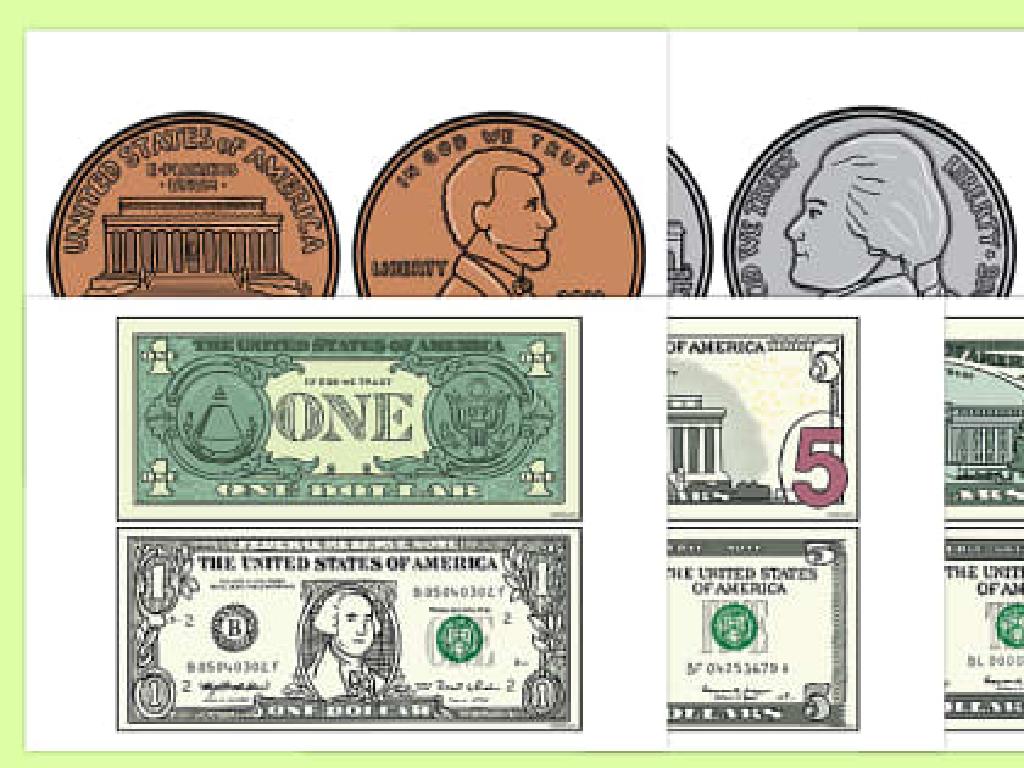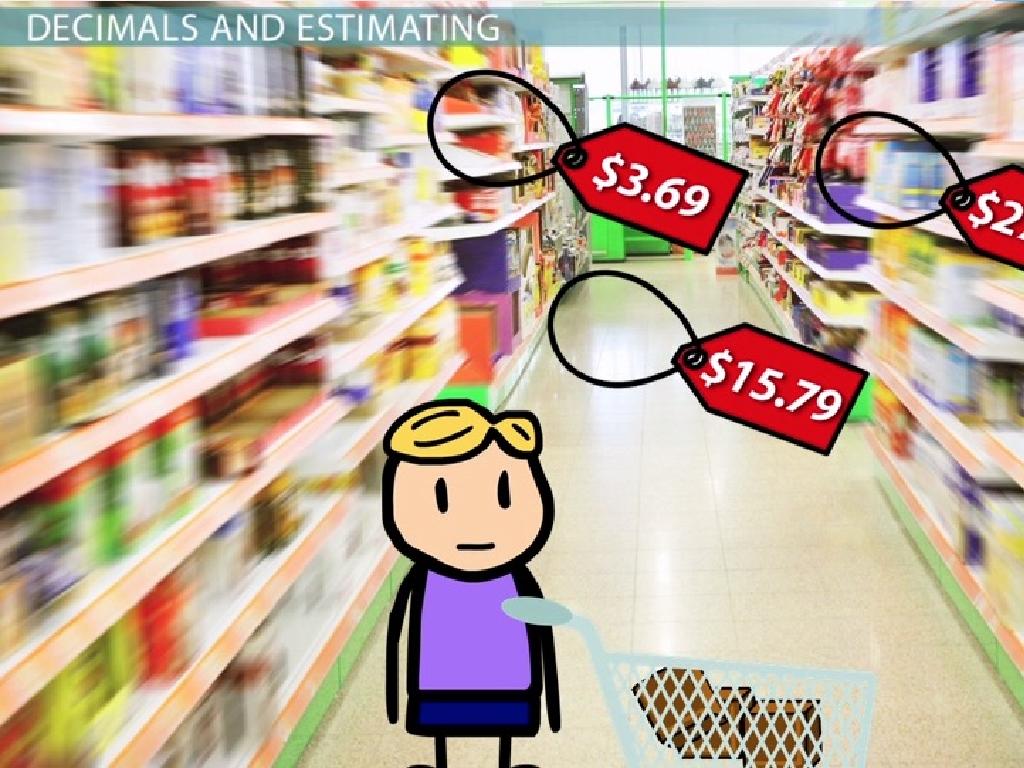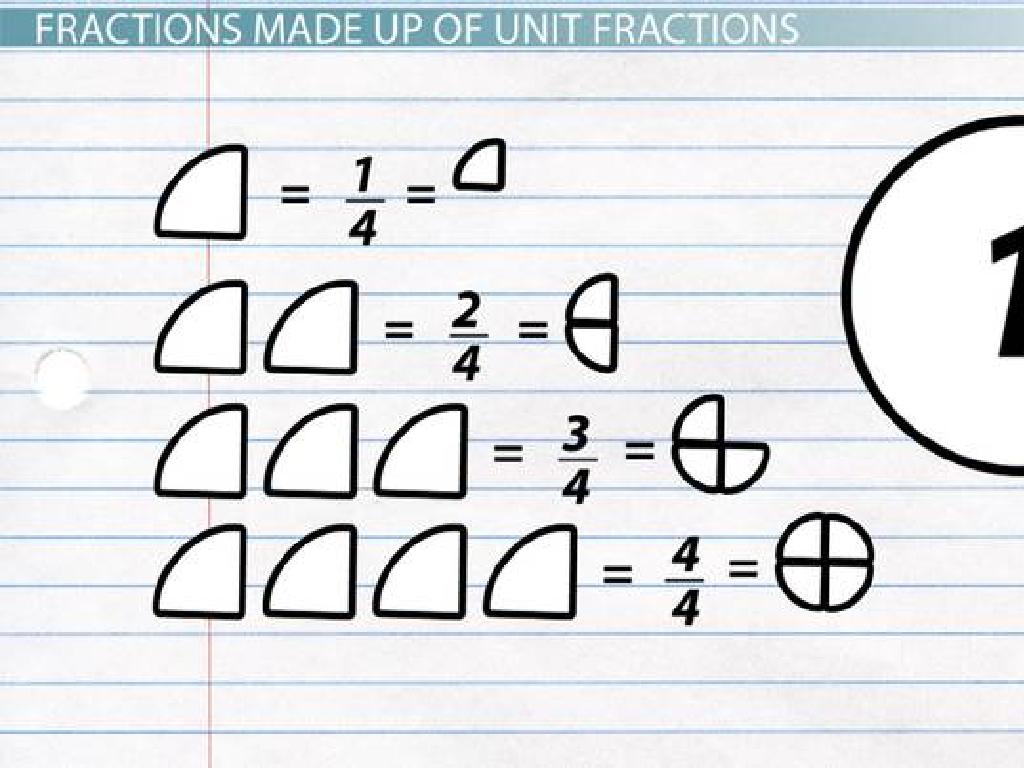Create Bar Graphs
Subject: Math
Grade: Fifth grade
Topic: Data And Graphs
Please LOG IN to download the presentation. Access is available to registered users only.
View More Content
Today’s Adventure: Creating Bar Graphs!
– Visualizing data with bar graphs
– Bar graphs turn numbers into pictures
– Bar graphs: What are they?
– A bar graph uses bars to show quantities
– Reasons we use graphs
– Graphs make it easier to compare data
– Examples of bar graphs
– Like comparing class test scores or favorite fruits
|
This slide introduces students to the concept of bar graphs as a means of visualizing numerical data. Explain that bar graphs help us turn complex data into simple pictures that are easy to understand and analyze. Emphasize that graphs are powerful tools for comparison, such as comparing test scores between different classes or understanding the popularity of various fruits among classmates. Provide examples of bar graphs to illustrate these points. Encourage students to think of situations where they could use a bar graph to represent information. This will set the foundation for the upcoming activities where students will create their own bar graphs.
Understanding Data in Our Daily Lives
– Data: Facts collection like numbers
– Everyday examples of data
– Weather temps, class attendance, daily steps
– Data’s role in decision-making
– Choosing clothes based on weather data
– Activity: Identify daily data
– List data you encounter daily, like game scores
|
This slide introduces the concept of data to students, emphasizing its prevalence in everyday life and its importance in decision-making. Begin by defining data as a collection of facts, which can be numbers, words, measurements, or observations. Provide relatable examples such as daily temperatures, number of students in class, or steps counted by a pedometer. Explain how data influences choices, like selecting appropriate clothing based on weather forecasts. Conclude with an interactive activity where students identify and list types of data they come across in their daily routines, such as scores from a sports game or the number of pages they read. This activity will help them recognize the practical applications of data and prepare them for learning about bar graphs as a way to visually represent data.
Exploring Types of Graphs
– Overview of graph types
– When to use each graph
– Use pie graphs for parts of a whole, line graphs for changes over time
– Today’s focus: Bar Graphs
– Bar graphs compare different categories
– Understanding Bar Graphs
– Bar graphs display data with rectangular bars
|
Begin the lesson by introducing the three common types of graphs: pie, line, and bar. Explain that pie graphs are best for showing how a whole is divided into parts, line graphs are ideal for displaying changes over time, and bar graphs are used to compare different categories. Emphasize that today’s lesson will focus on bar graphs. Explain the structure of bar graphs, including the x-axis and y-axis, and how the length of each bar represents the data value. Use examples relevant to fifth graders, such as comparing the number of pets students have or favorite ice cream flavors. This will help them understand how bar graphs organize and present information in a visual and comparative format.
Understanding Bar Graphs
– What is a bar graph?
– A visual tool for comparing data across categories using bars.
– Key parts of a bar graph
– Title: what the graph shows; Axis: categories and values; Scale: range of values; Bars: data representation.
– Example of a bar graph
– See a bar graph comparing students’ favorite fruits.
|
This slide introduces students to the concept of bar graphs, an essential tool in data representation. Begin by explaining that a bar graph is used to compare different groups or categories visually. Highlight the importance of each part of the bar graph: the title tells us what information the graph is showing; the axes represent the categories being compared and the scale of values; the scale indicates the range of values being measured; and the bars show the actual data. Use a simple example, such as a bar graph showing the number of students who prefer different types of fruit, to illustrate how to read and interpret the information presented. Encourage students to think about why bar graphs are useful and where they might see them in real life.
Creating Our Bar Graph
– Choose a topic and gather data
– Draw and label the axes
– Horizontal axis (x) for categories, vertical (y) for values
– Decide on a scale for the axes
– Scale should be even and fit the data range
– Draw bars for data categories
– Each bar’s height should match the data value
– Add a title and check accuracy
– Ensure your graph has a clear title and all data is correct
|
This slide outlines the steps for creating a bar graph, which is a visual tool for comparing data across different categories. Students should start by choosing a topic that interests them and collecting relevant data. When drawing the graph, it’s crucial to label the axes correctly: the horizontal axis typically represents the categories being compared, and the vertical axis shows the values. The scale must be chosen so that it’s easy to read and fits the data range. Each bar’s height should correspond to the value it represents. Finally, adding a descriptive title and double-checking the graph’s accuracy are essential for clarity and precision. Encourage students to be creative with their topics and meticulous in their graph creation.
Let’s Practice Together: Favorite Fruits Bar Graph
– Collect data on favorite fruits
– Create a bar graph with the data
– Use bars to represent the number of votes for each fruit
– Analyze our class’s fruit preferences
– Which fruit is most popular? Least popular?
– Discuss findings as a group
|
This class activity is designed to provide hands-on experience with collecting data and creating a bar graph. Start by having each student vote for their favorite fruit. Tally the votes and then guide the class through the process of creating a bar graph on the board or on paper, with each bar representing the number of votes for each fruit. Once the graph is complete, lead a discussion about what the graph reveals regarding the class’s fruit preferences. Encourage students to observe patterns, such as which fruit is the most or least popular, and to think about why this might be. This activity will help students understand how to organize, represent, and interpret data visually.
Bar Graphs in the Real World
– Common uses of bar graphs
– Seen in news, schools, and business reports
– Simplifying complex information
– Visuals make data comprehension quicker
– Example: Weather reports
– Daily temperatures compared over a week
– Example: Sports statistics
– Comparing scores or players’ performance
|
This slide aims to show students how bar graphs are utilized in everyday life to represent data visually, making complex information easier to digest. Bar graphs are commonly found in various settings such as news media, educational materials, and business reports. They help compare quantities and understand trends at a glance. For instance, weather reports use bar graphs to show temperature changes throughout the week, and sports statistics use them to compare different players’ performances. Encourage students to think of other examples where bar graphs are used and discuss how these visuals help convey information effectively.
Class Activity: Create Your Own Bar Graph!
– Receive your data set
– Follow steps to create a bar graph
– Title your graph, label axes, choose scale, draw bars
– Be ready to present your graph
– Explain your graph’s data story
– What does the graph tell us? Look for patterns or trends
|
In this activity, students will apply their knowledge of bar graphs by working with actual data. Distribute different data sets to each student to ensure a variety of graphs. Walk around the classroom to assist and answer questions as students work on their graphs. Once completed, have each student present their graph to the class, explaining the data it represents and any interesting findings they’ve discovered. This will help students practice their analytical and presentation skills. Possible data sets could include favorite fruits, daily temperatures, or class test scores. Encourage creativity and accuracy in their graph-making process.
Conclusion: Mastering Bar Graphs
– Review steps for bar graph creation
– Discuss the usefulness of bar graphs
– They make comparing data easy and clear.
– Emphasize the importance of practice
– Encourage questions and exploration
– Ask about any doubts or new ideas!
|
As we wrap up, let’s go over the process of creating a bar graph once more, ensuring that each step from selecting data to drawing the bars is clear. Discuss how bar graphs help us to compare quantities easily and visualize data in a way that’s straightforward. Remind students that becoming proficient with bar graphs, like any skill, requires practice. Encourage them to try creating bar graphs with different data sets at home. Finally, open the floor for any lingering questions or for students to share their own insights on the topic. This will help reinforce their understanding and spark curiosity.
Homework Challenge: Exploring Bar Graphs
– Find a bar graph in print media
– Write about the graph’s information
– Summarize what the graph represents
– Explain the data shown in the graph
– Look for trends, comparisons, and totals
– Get ready to present your findings
|
This homework assignment is designed to help students apply their knowledge of bar graphs to real-world data. Students should look for a bar graph in newspapers or magazines, which are often used to represent statistical data in a visual format. Encourage them to write a few sentences summarizing what the graph is about, what information it is conveying, and any trends or comparisons they notice. This exercise will help them understand how bar graphs are used to communicate information clearly and effectively. In the next class, students will have the opportunity to share their findings, which will reinforce their understanding and provide them with public speaking practice.






